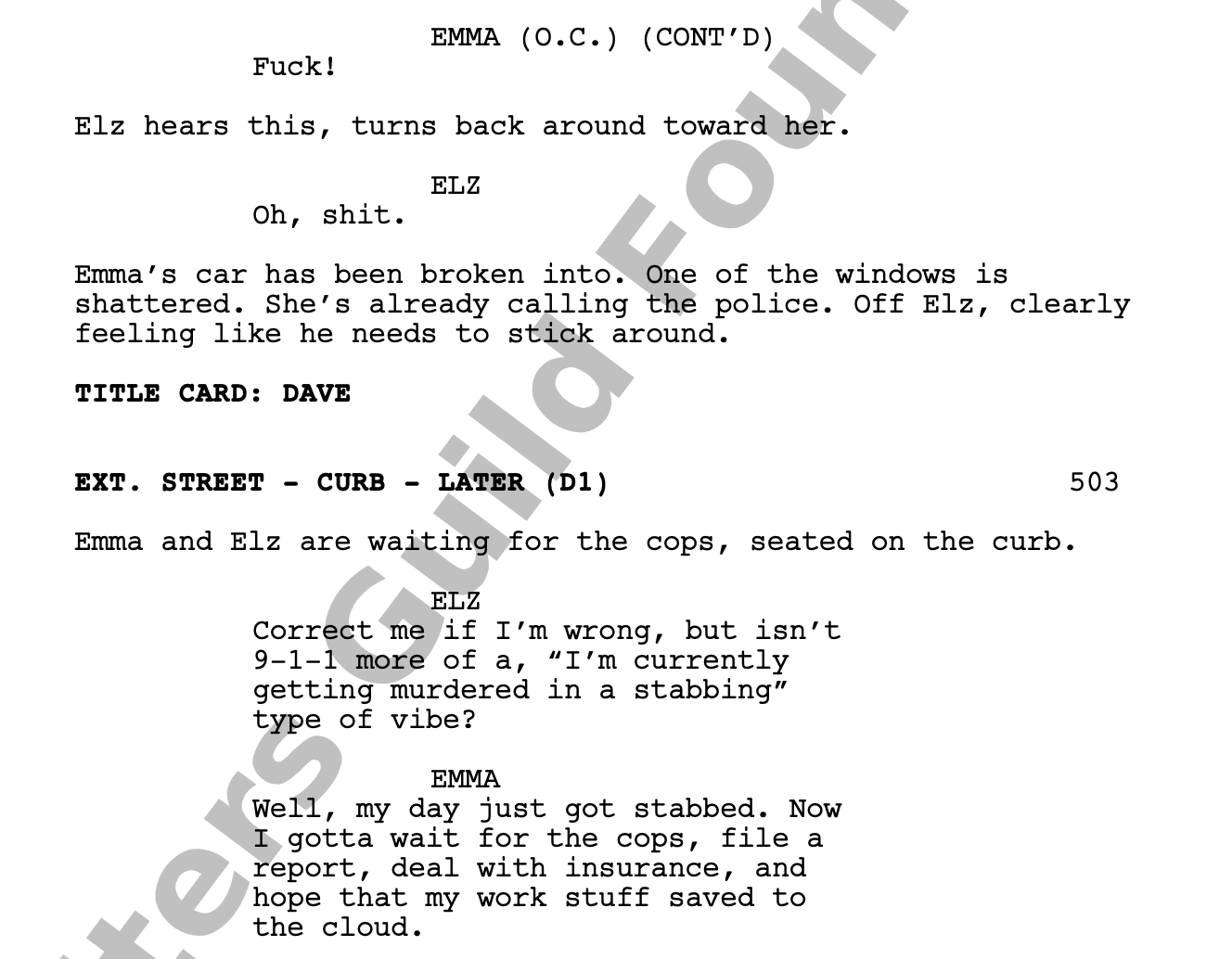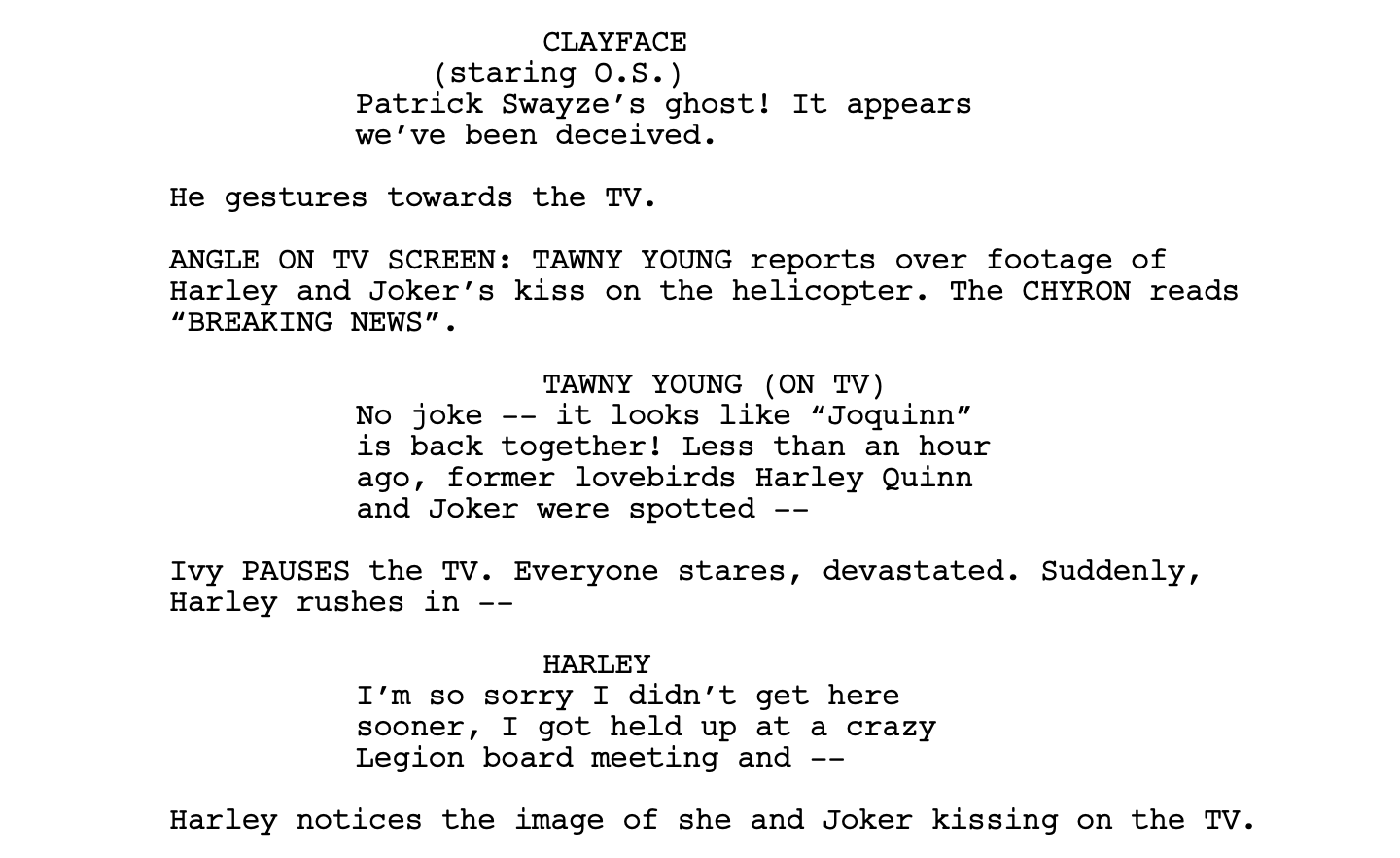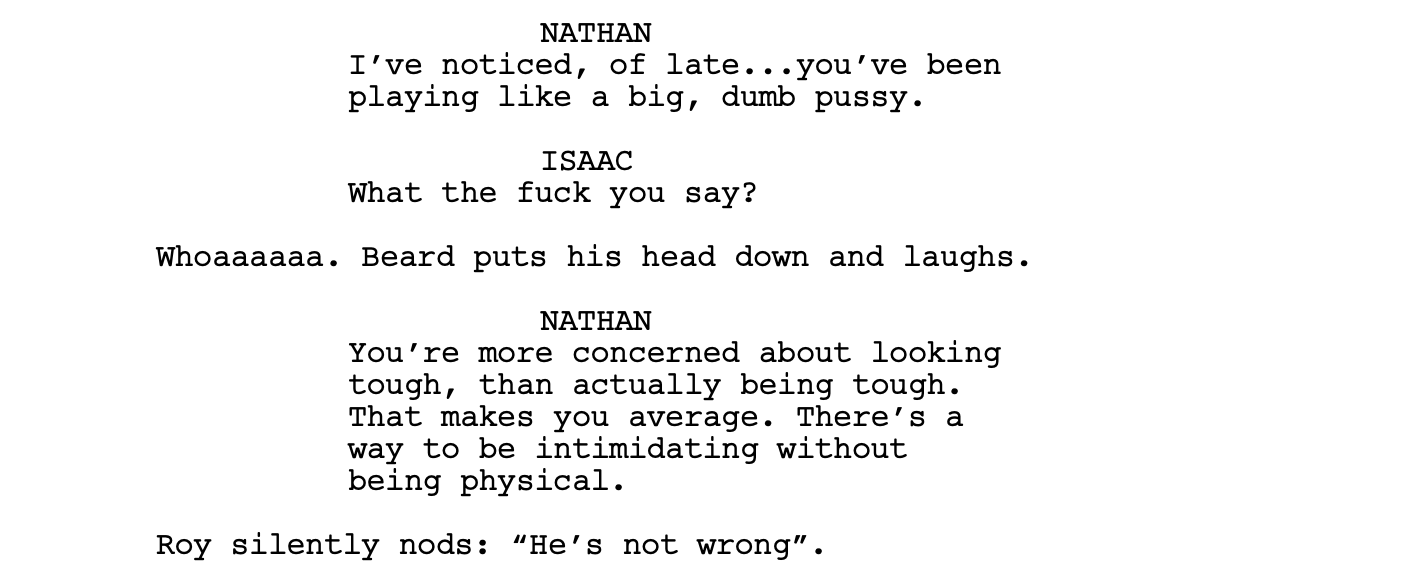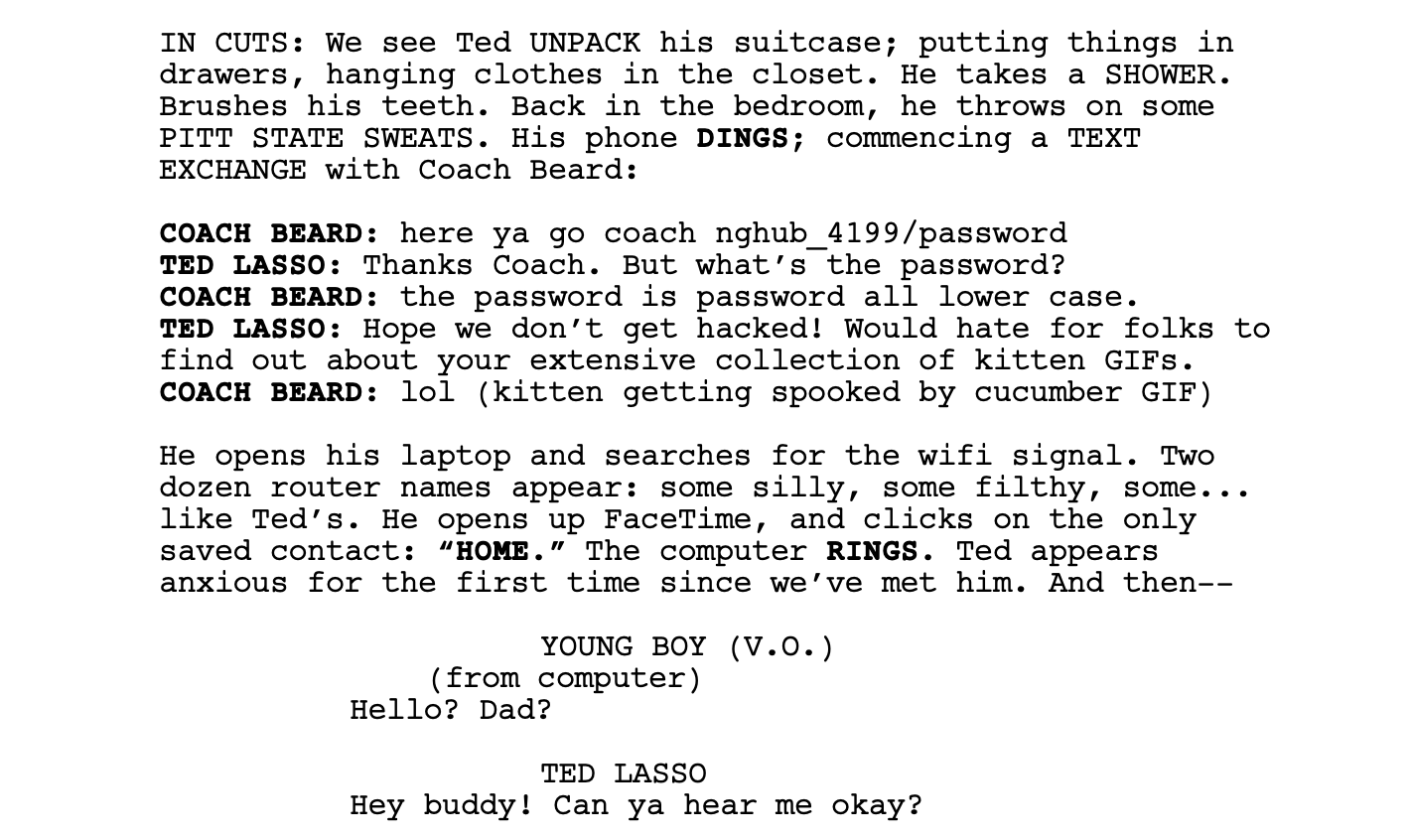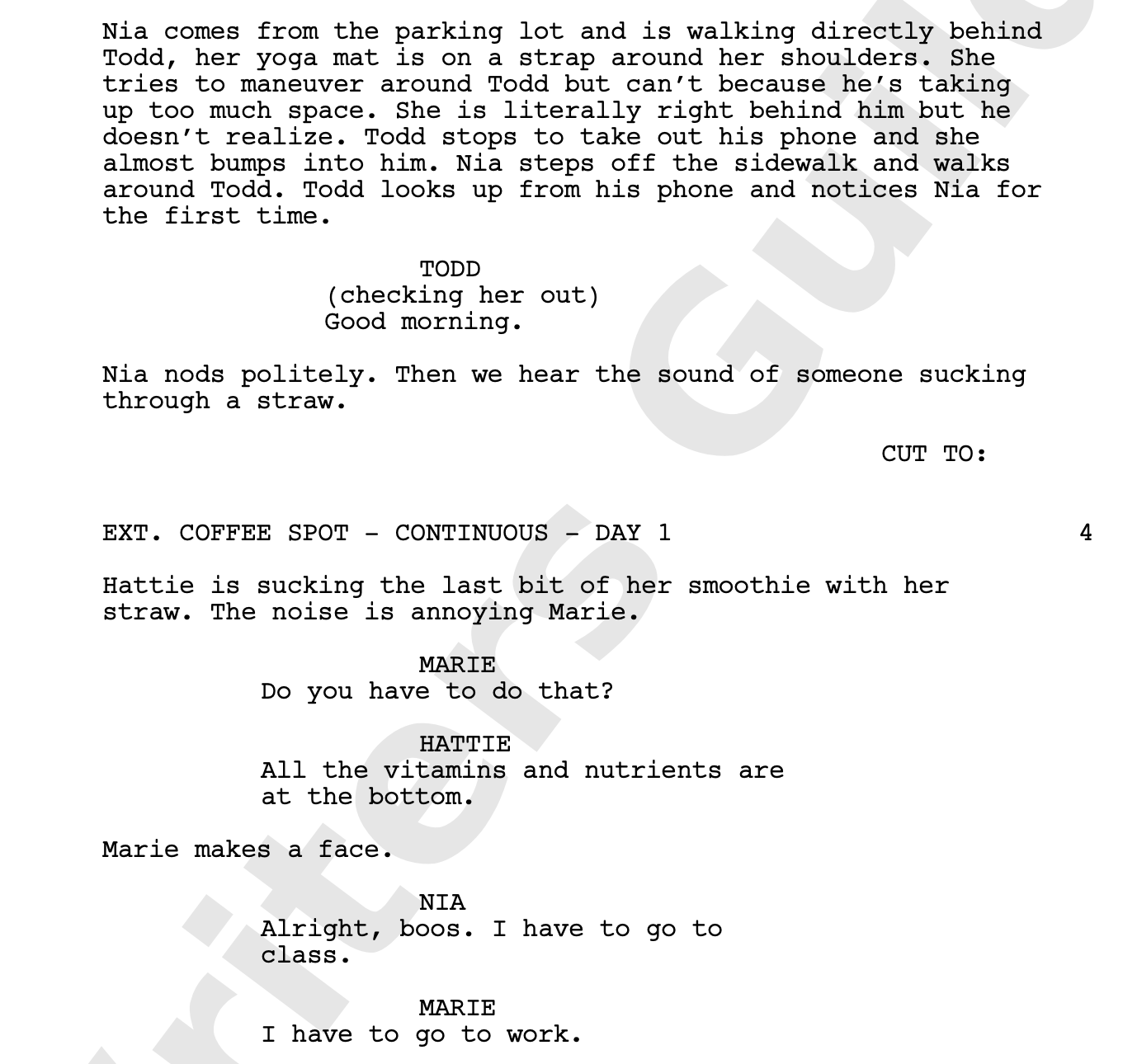FORMATTING YOUR SPEC SCRIPT WHILE SOCIAL DISTANCING, A PRIMER PART 19
With Fellowship Season ‘22 upon us, here is another post in what has become a mainstay series for the WGF Library: our TV Spec Script Formatting Primers.
If you’re taking a TV writing class or applying to a fellowship or just trying to learn the mechanics of TV writing as you build your portfolio, we likely have scripts you want to look at in the library for your research—scripts that you can’t find anywhere else. You might be frustrated you can’t come in and look at them.
If you feel stymied by our in-person closure (or live outside LA), this blog series is for you. These primers are meant to supply the notes you’d take if you came to read scripts in-person.
As always, we aren’t able to send out scripts in full as we are not the copyright holders, but we hope this primer jump-starts your research and writing. If you have further, more specific questions about the shows covered in this (or any other) formatting post, please e-mail us at library@wgfoundation.org and we can help clarify or provide more info.
DAVE (FXX)
Average Page Count: 27-30 (but we saw one script that was 18)
Average Scene Count: 9-28
Broken into acts? No, but each episode usually starts with a cold open.
Other things to consider:
Scene headings are bolded.
Scripts begin with COLD OPEN, centered and underlined. The cold open ends with TITLE CARD: DAVE in bold on the left-hand side. The next scene immediately follows the title card.
The cold open is typically 2-5 pages long.
Flashbacks are specified in the scene heading, i.e. - “INT. HOSPITAL ROOM - FLASHBACK - 3 YEARS AGO” or when leaving the flashback: “INT. RECORDING STUDIO - PRESENT DAY - LATER”
Any rapping or singing is formatted in all-CAPS and italics.
Episodes end with END OF SHOW, centered and underlined, sometimes bolded.
HARLEY QUINN (DC Universe / HBOMax)
Average Page Count: 30-33
Average Scene Count: In the scripts we have, the scenes aren’t numbered. Use your best guess.
Broken into acts? Yes, three acts + a cold open (and sometimes a tag)
Other things to consider:
Scene headings are underlined.
Sometimes animated shows have double-spaced dialogue. This show uses single-spaced.
Act headings are centered, bolded and underlined. ACT ONE / END OF ACT ONE.
The cold open ends with “SMASH TO MAIN TITLES:” in all caps on the right-hand side of the page, then END OF COLD OPEN.
The cold open tends to run 4-5 pages, but can go as long as 9. Act one is usually 8-10 pages; act two is around 7-9; act three runs about 6-8. If there is a tag, it’s usually a page or less. The end of the tag or the end of the episode if there is no tag consists of: END OF EPISODE, centered, bolded, underlined.
The writers use CHYRON for text on screen.
Sounds and camera movements are CAPITALIZED. This is prevalent in all TV scripts, but especially animated ones.
HOME ECONOMICS (ABC)
Average Page Count: 28-32
Average Scene Count: 15-19
Broken into acts? Yes, two acts + a cold open and a tag
Other things to consider:
Scene headings are bolded.
Act headings are centered, bolded and underlined. COLD OPEN / END OF COLD OPEN. ACT ONE / END OF ACT ONE. TAG / END OF EPISODE.
The cold open is 2-4 pages. More often, it’s 2. Acts one and two are 8-15 pages. The tag of often 1-2 pages.
Significant props, sounds and actions are CAPITALIZED.
Generally the scripts are dialogue heavy — description is mostly minimal.
Flashbacks are specified in the scene heading, i.e. - INT. BUILDING (RESTAURANT) - FLASHBACK - 2015
TED LASSO (Apple TV+)
Average page count: In the library we currently have the pilot and episode 107. The pilot is 37 pages. Episode 7 is 33
Average scene count: Roughly 29-33
Broken into acts? No
Other things to consider:
Character introductions are often done with parentheticals, i.e. - “HIGGINS (mid-50s, middle management, middle everything).”
Significant props, sounds and visuals are CAPITALIZED. Lasso’s “Believe” sign is even bolded in the pilot.
There is no formally demarcated “Teaser” but a few pages in, there is an “INSERT: CREDITS” moment on the left-hand side of the page in ALL-CAPS and bold.
The writers use a lot of quotations in the script. If a character says nothing, they often write in quotations what the character is “saying” with their facial/body language.
Sometimes there are music cues. These are formatted: “MUSIC CUE: NAME OF SONG AND ARTIST” in all-caps and sometimes bolded.
If characters are texting each other and we see their messages on screen it looks a lot like a chat transcript. The characters names are in bold.
Other significant text we see on screen, like if a character is reading an e-mail, is usually bolded.
While not formally broken into acts, scripts end with END OF SHOW, centered and underlined, sometimes bolded.
Watch our WGF Library Script Breakdown of the Ted Lasso pilot with Writer/Co-Creator Bill Lawrence here.
TWENTIES (BET)
Average page count: Keep in mind, the library has the pilot script and episode 107. The pilot is 35 pages. Episode 7 is 24.
Average scene count: maybe 17
Broken into acts? No
Other things to consider:
The scripts are generally dialogue heavy. Lots of white space on the page. Still, the description is not afraid to get into the small details.
There aren’t a lot of bolded or underlined words for emphasis. It’s all very simple and direct. It has a cinematic feel.
If characters are texting each other and we see their messages on screen, it looks a lot like a chat transcript.
If a character sees/reads any other text on screen, it’s often in quotes and CAPITALIZED within the description.
Scripts end with FADE TO BLACK. on the right-hand side.
WU-TANG: AN AMERICAN SAGA (Hulu)
Average page count: 43-51
Average scene count: Big range 50 to 90
Broken into acts? Yes, five acts and a teaser
Other things to consider:
Scripts are broken into five acts and being with a teaser. The teaser will be 5-6 pages, but can be as short as 4 or as a long as ten. Acts one and two are usually longer — clocking in at 10-15 pages on average, then the rest of the acts (three, four and five) get progressively shorter. Acts three and four typically range 5-10 pages. Act Five is 4-6 pages.
Acts headings are formatted: TEASER / END OF TEASER, ACT ONE / END OF ACT ONE… centered, CAPITALIZED and underlined.
Episodes end END OF SHOW, centered, CAPITALIZED and underlined.
Sometimes the show uses transitions before act outs or before the end of the episode (e.g. “FADE OUT. on the right-hand side in all-caps before END OF SHOW)
Flashbacks are written into the scene headings, e.g. EXT. UNCLE HOLLIS’ HOUSE - FLASHBACK - 1981. The word “flashback” in the scene heading is bolded. The entire flashback is written in italics.
The scripts aren’t afraid to write rich, detailed description or to describe tone. Episode 109 “I Declare War” opens with three paragraphs about the influence of kung fu films on the Wu-Tang Clan.
Happy Writing from the WGF Library Team!

